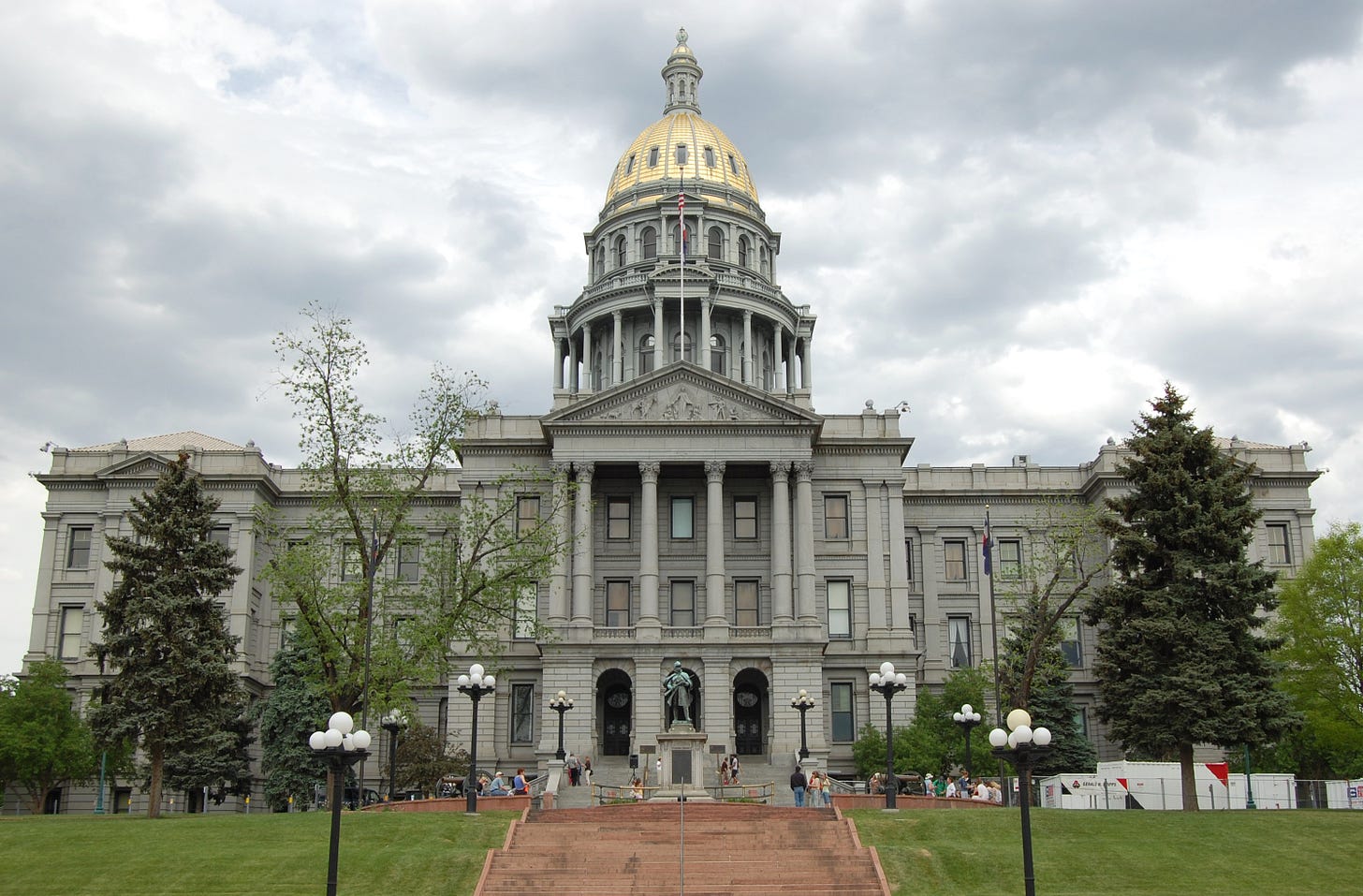If you want a more detailed look, go here.
Ok, Colorado’s ambitious climate legislation aims to transform our electrical generation sector, targeting a cleaner grid by 2040. Environmentalists Rejoice! Before we break out the champagne though, understanding the costs, reliability implications, and potential hurdles is critical. Here’s a deep dive into the state’s goals, their impact on rates, and what might derail them.
The Goals
Colorado’s cornerstone climate legislation includes House Bill 19-1261, which sets economy-wide GHG reduction targets of 50% by 2030 and 90% by 2050 from 2005 levels, with the electricity sector aiming for 80% reduction by 2030. Senate Bill 24-212 and a draft bill from Governor Jared Polis push for 95% decarbonization of electricity by 2035 and 100% clean energy by 2040, accelerating the prior 2050 target. These laws mandate utilities like Xcel Energy and Black Hills Energy to phase out coal and gas, replacing them with renewables.
Capacity Additions and Costs
The Colorado Energy Office estimates a tripling of wind capacity (from ~4,000 MW to 12,000 MW) and a fivefold increase in solar (from ~1,500 MW to 7,500 MW) by 2040, alongside 2,000 MW of battery storage. Based on 2025 costs, wind is ~$1,500/kW, solar ~$1,200/kW, and battery storage ~$400/kWh for 4-hour systems. This translates to:
Wind: 8,000 MW new capacity × $1.5M/MW = $12 billion
Solar: 6,000 MW new capacity × $1.2M/MW = $7.2 billion
Batteries: 2,000 MW × 4 hours × $400/kWh = $3.2 billion
Transmission: Xcel’s $1.7 billion Colorado Power Pathway and $3 billion in delayed projects suggest a $5 billion total for new lines.
My battery cost above is low. From reddit:
When you are looking at battery costs of $66/kwh, you do have to remember that I believe is only the cost of the batteries. Inverter capacity and civil works also have to be added to that number to make a functioning system. That said that cost of Inverters is also dropping, and as storage duration extends they become less relevant too.
Total capital cost: ~$27.4 billion. Spread over 15 years for 1.6 million Xcel customers, this adds ~$1,140/customer/year, or ~$95/month, assuming no financing costs. Current average residential bills (~$90/month) could double.
To repeat that, residential bills will double. And for a lot of families an additional $95/month is brutal.1 As the PUC rate caps limit annual increases to 1.5%, there’s no fucking way this works.
Impact on Rates
But wait, without federal subsidies, costs rise even more. The Inflation Reduction Act’s tax credits cover ~30% of renewable project costs. Removing them increases the $27.4 billion to ~$39 billion, pushing per-customer costs to ~$1,625/year ($135/month). Even with subsidies, utilities like Colorado Springs Utilities report 50–60% cost increases for wind and solar contracts, straining affordability.
Reliability Concerns
Renewables’ intermittency challenges grid reliability. Batteries mitigate this but are limited to short-duration support (4–8 hours). Xcel’s plan includes 669 MW of gas for backup, but accelerated coal retirements (all by 2031) risk supply gaps during low wind/solar periods. Microgrids and transmission upgrades help, but rural wind/solar sites require long-distance lines, increasing outage risks if not robustly designed.
In addition, as Spain/Portugal recently showed, the grid needs heavy physical turbines running 24/7 to provide inertia. They’re working on providing pseudo-inertia via wind/solar. But until that is achieved, we need gas (or nuclear) turbines running 24/7. Multiple turbines.
Limits and Off-Ramps
The draft 2040 bill allows utilities to seek PUC exemptions if compliance raises rates >1.5% annually or compromises reliability. The PUC can also delay projects, as seen with Xcel’s $3 billion in deferred wind/solar due to cost concerns. So power can be affordable, or reduce carbonization.
Conclusion
Colorado’s 2040 clean energy goal is ambitious but costly, potentially doubling (or more without subsidies) electricity bills. Reliability hinges on storage and transmission investments, with gas always running, with additional gas available as a backup.
Those legislative off-ramps are there for a reason. The PUC needs to run the numbers, face reality, and drop the incredibly expensive & unreliable expansion of wind & solar generation.
I often worry that the people making the decisions don’t emotionally understand what a hit $95/mo is to many families. When you have no luxuries, what do you cut back to pay this?




